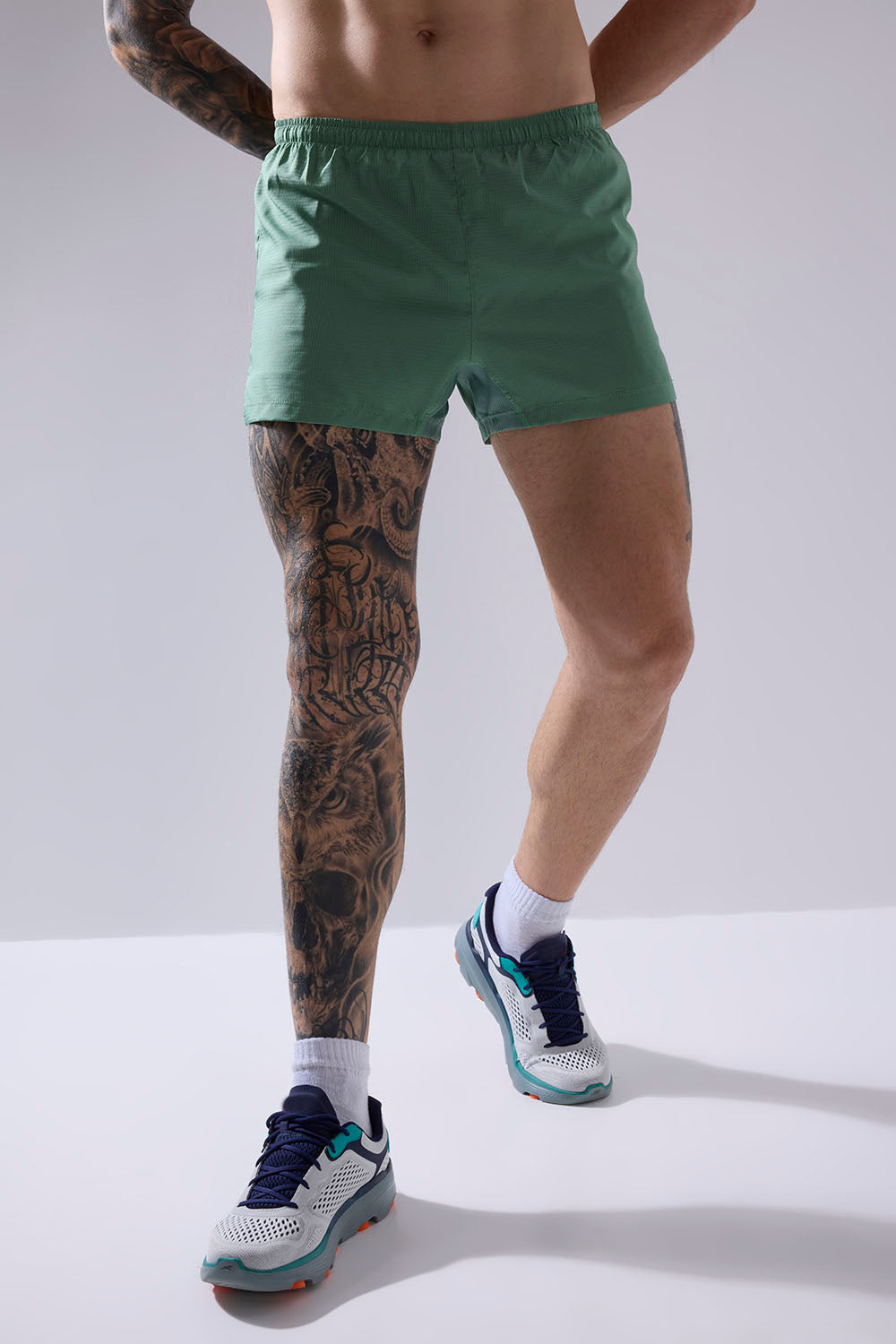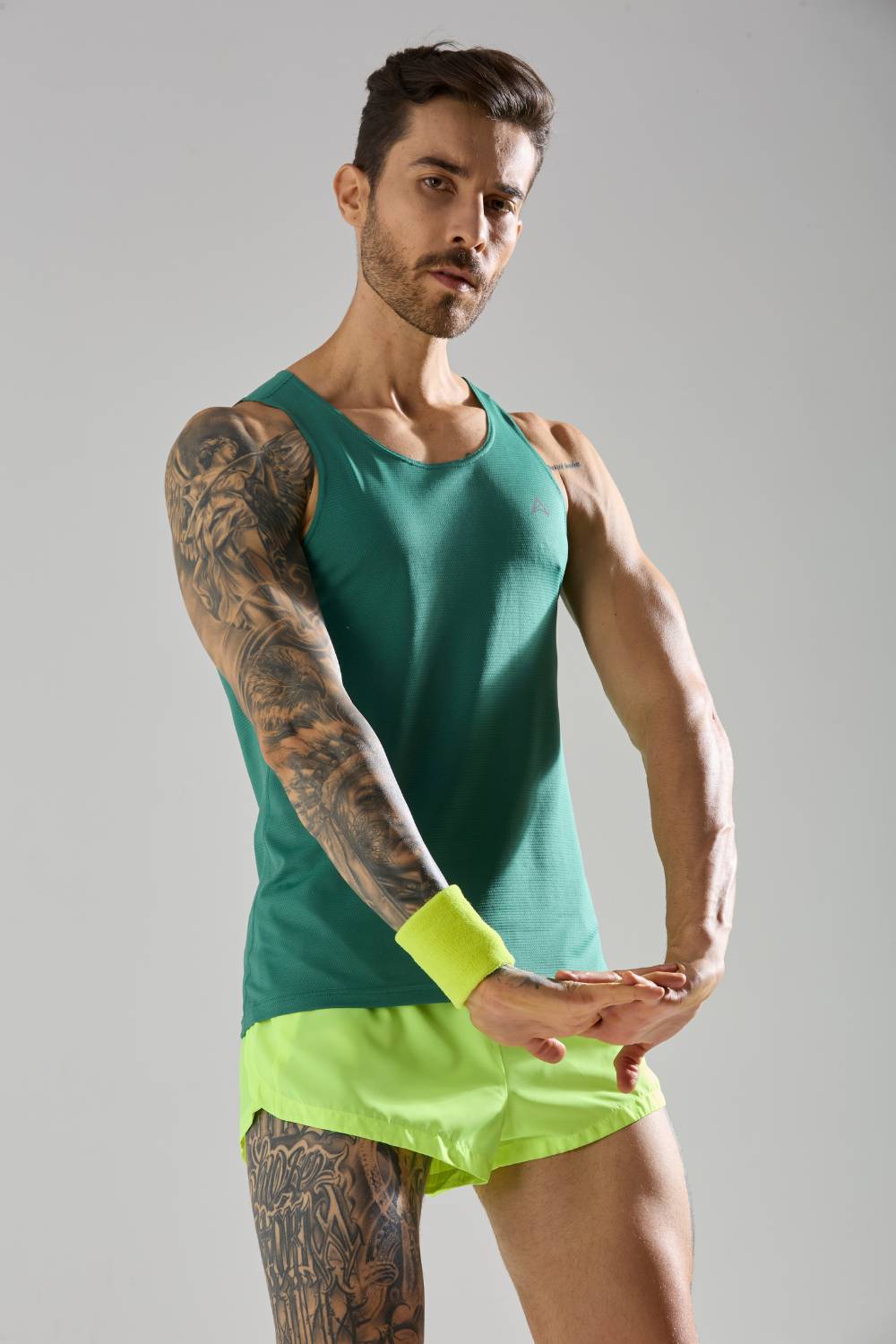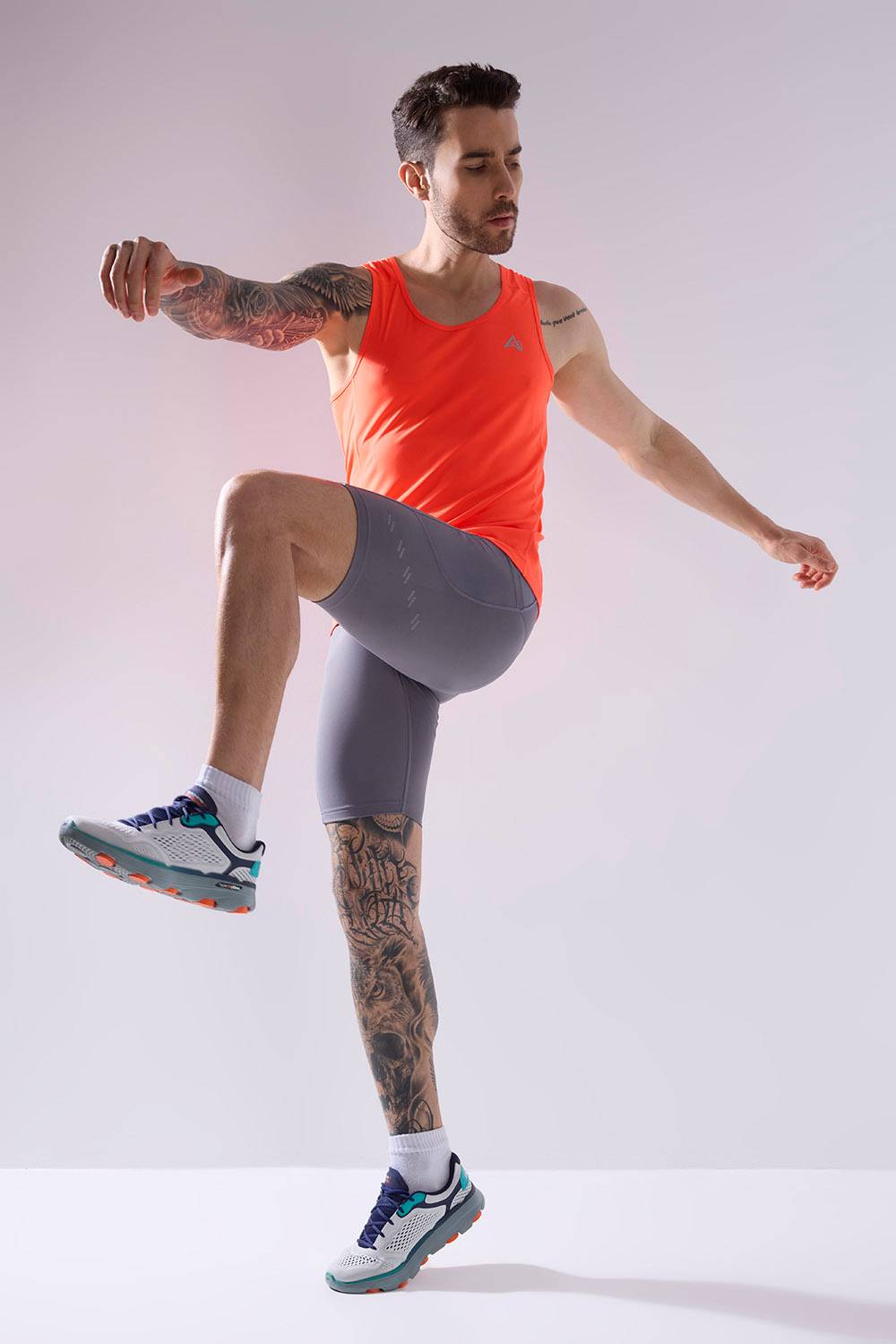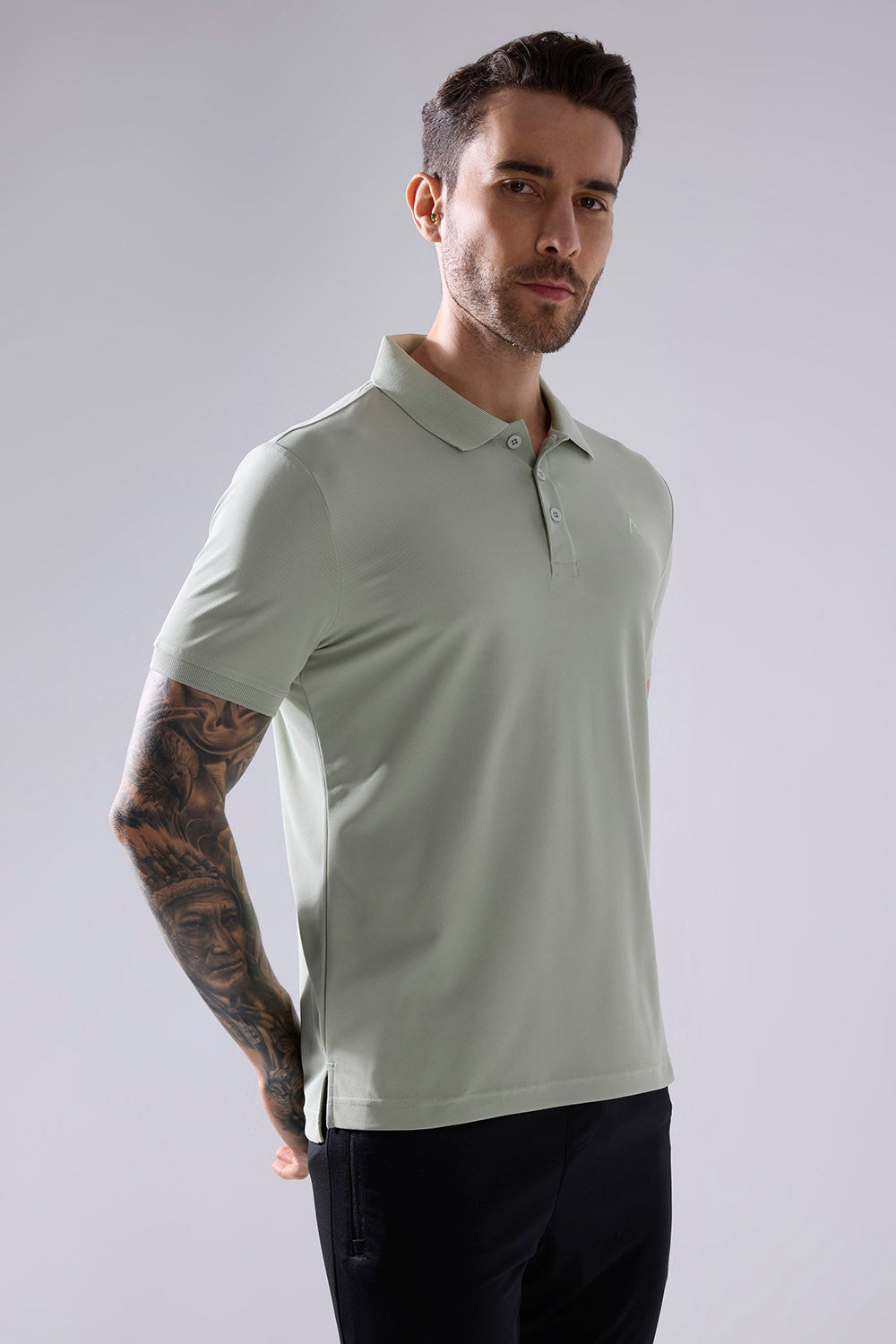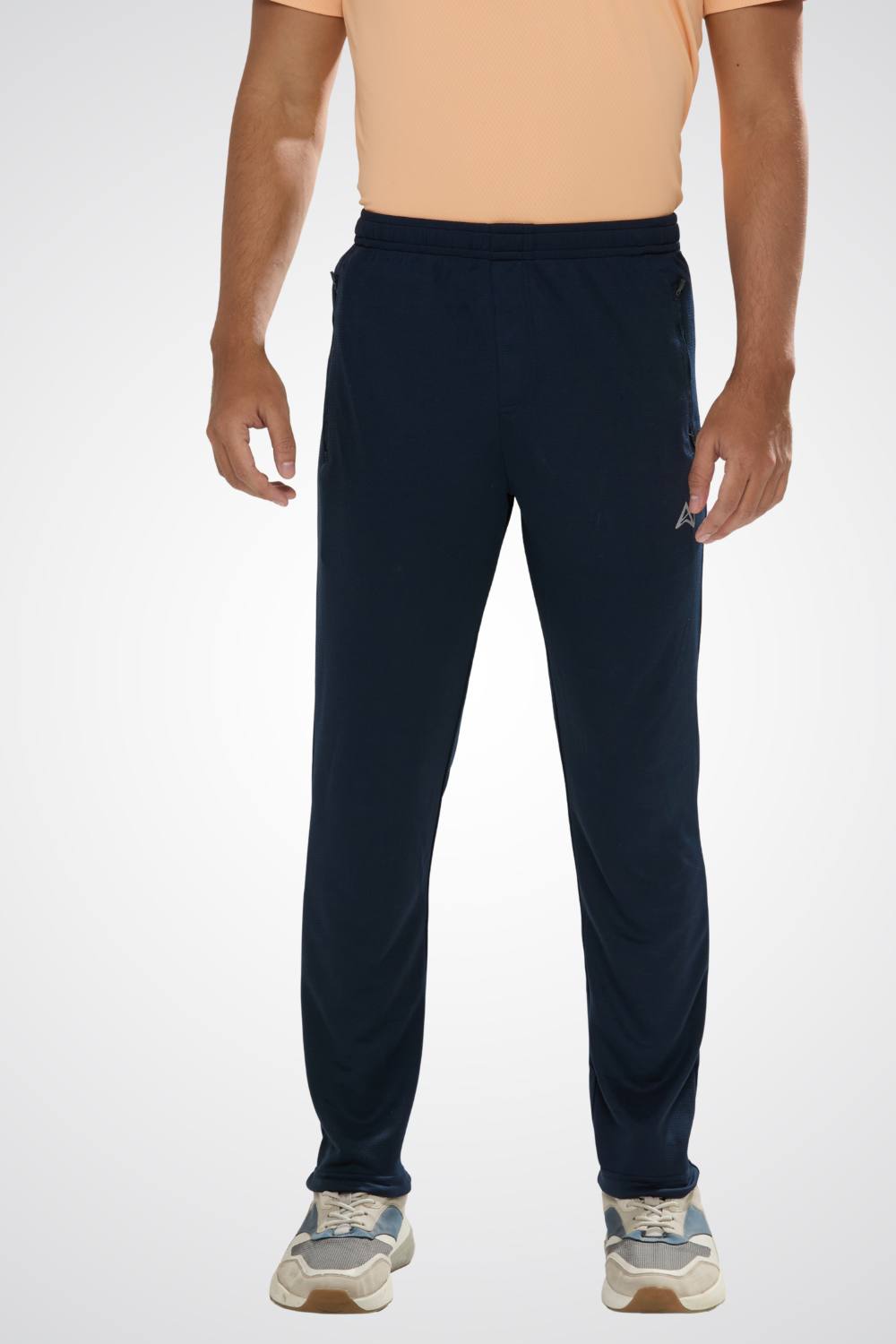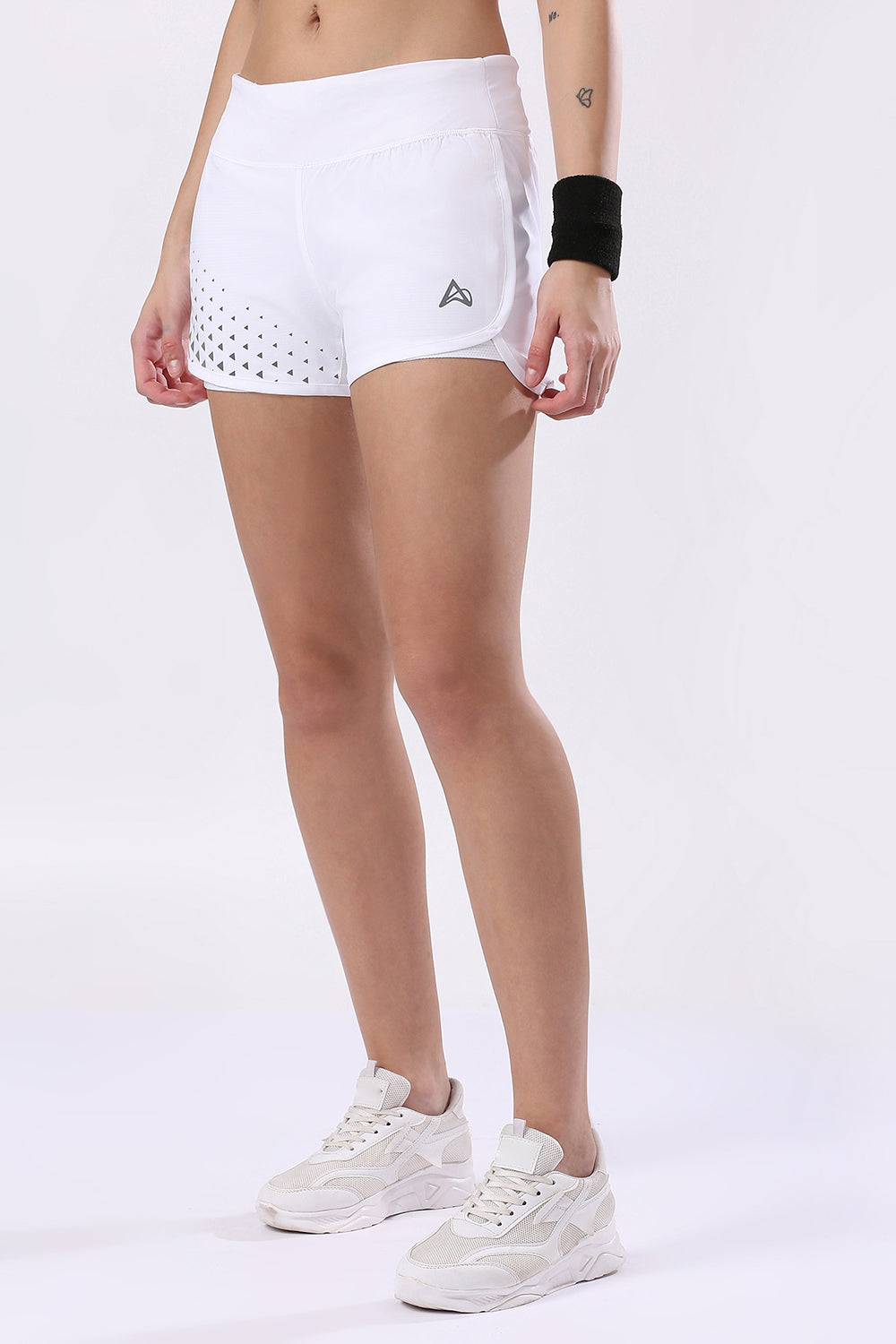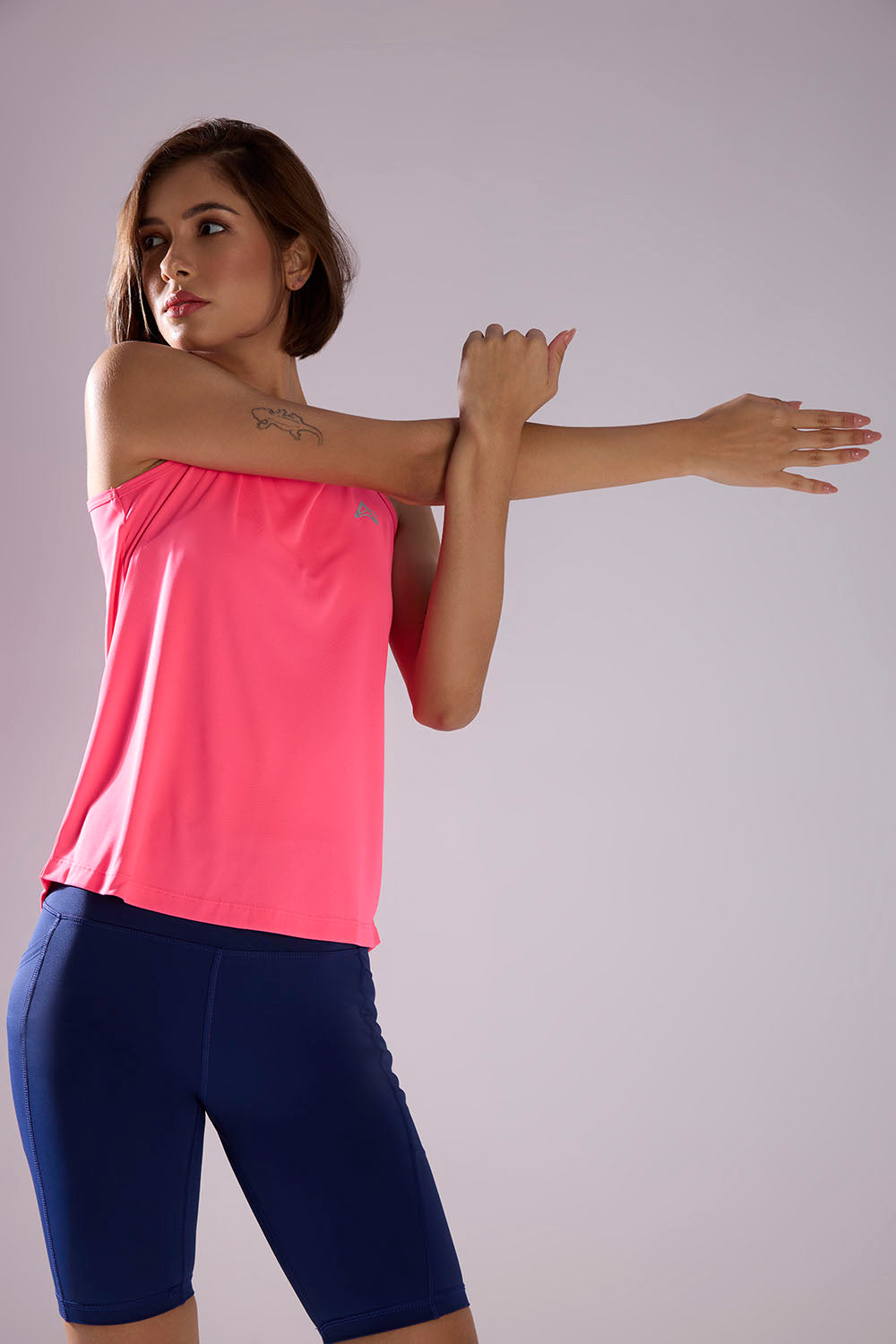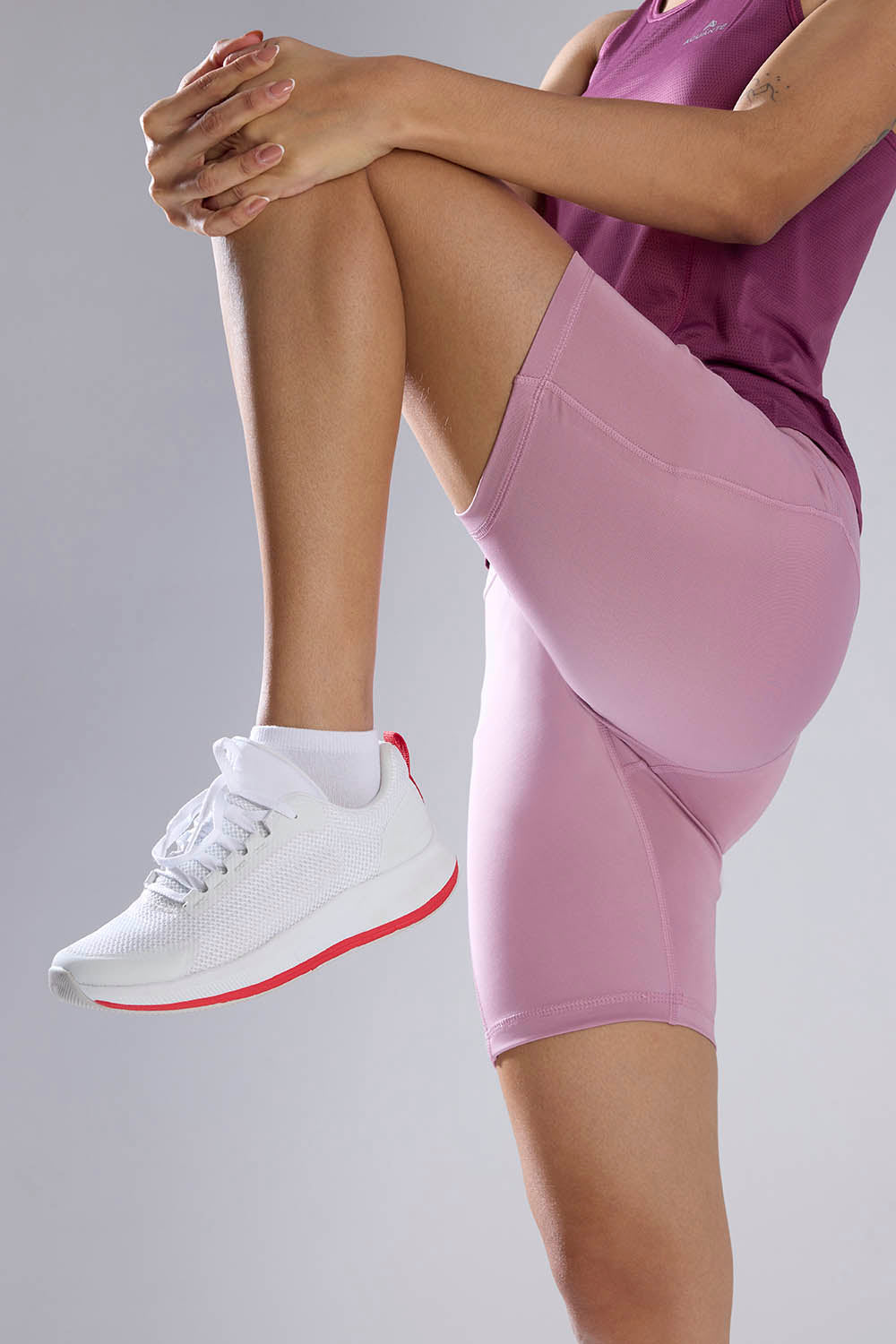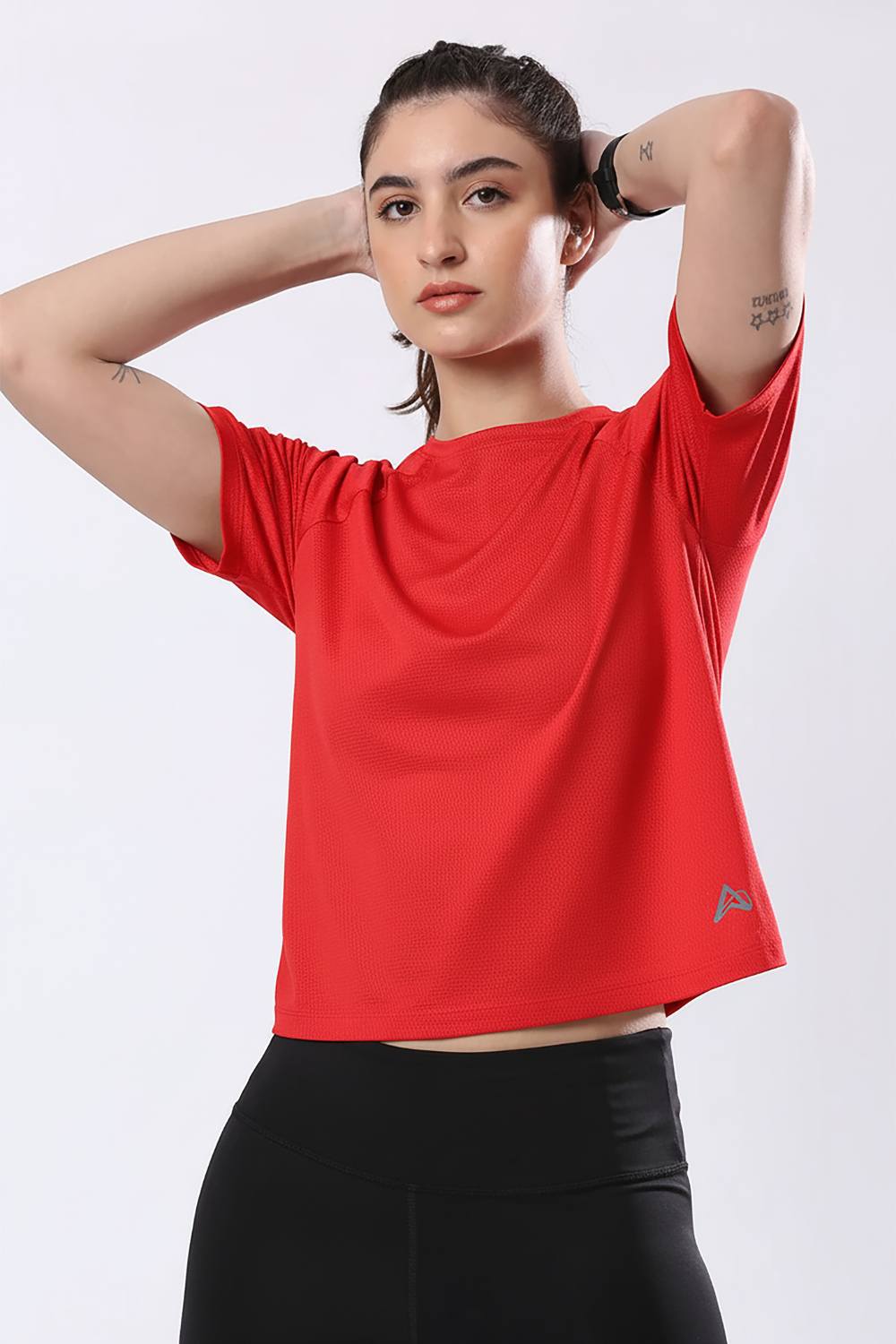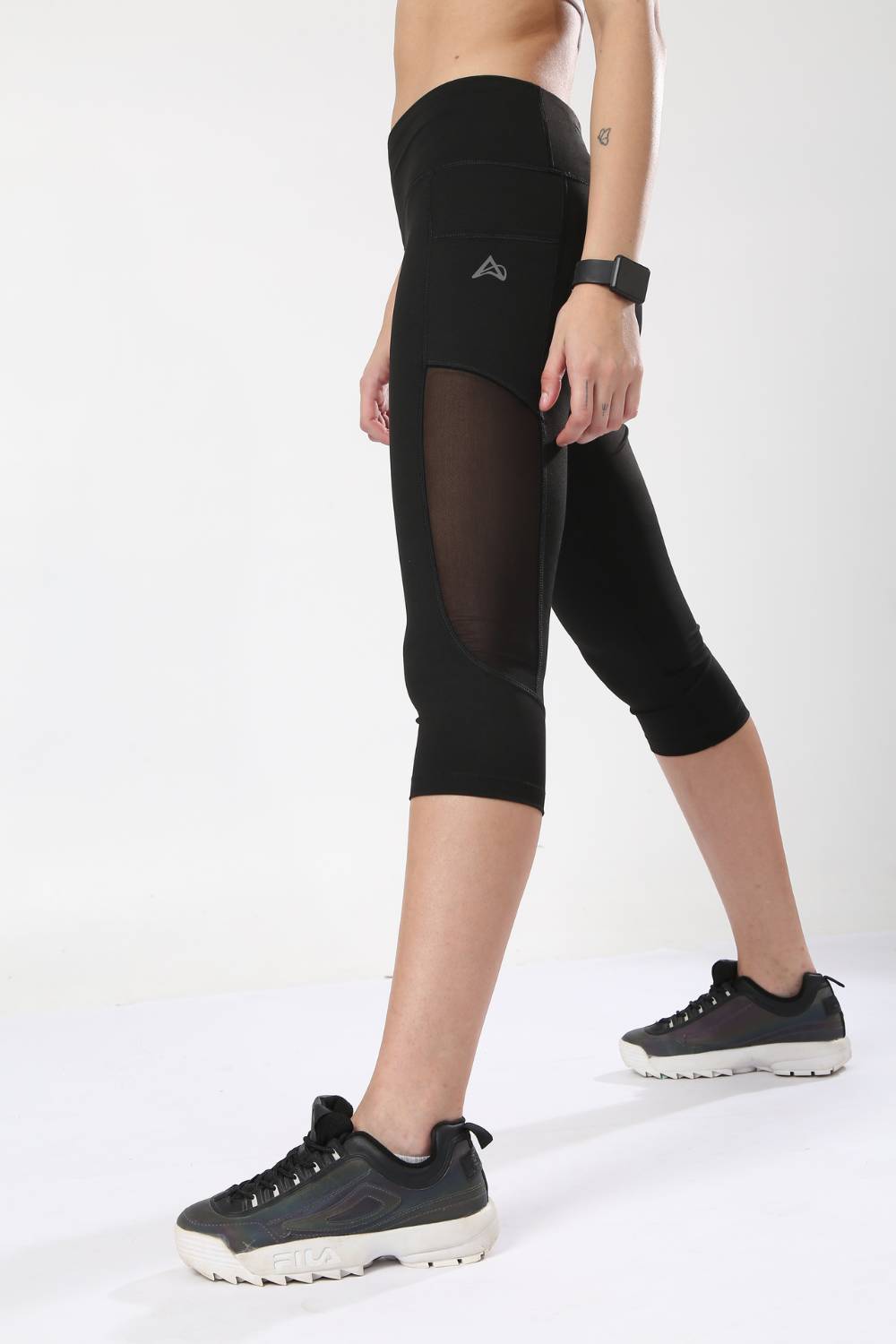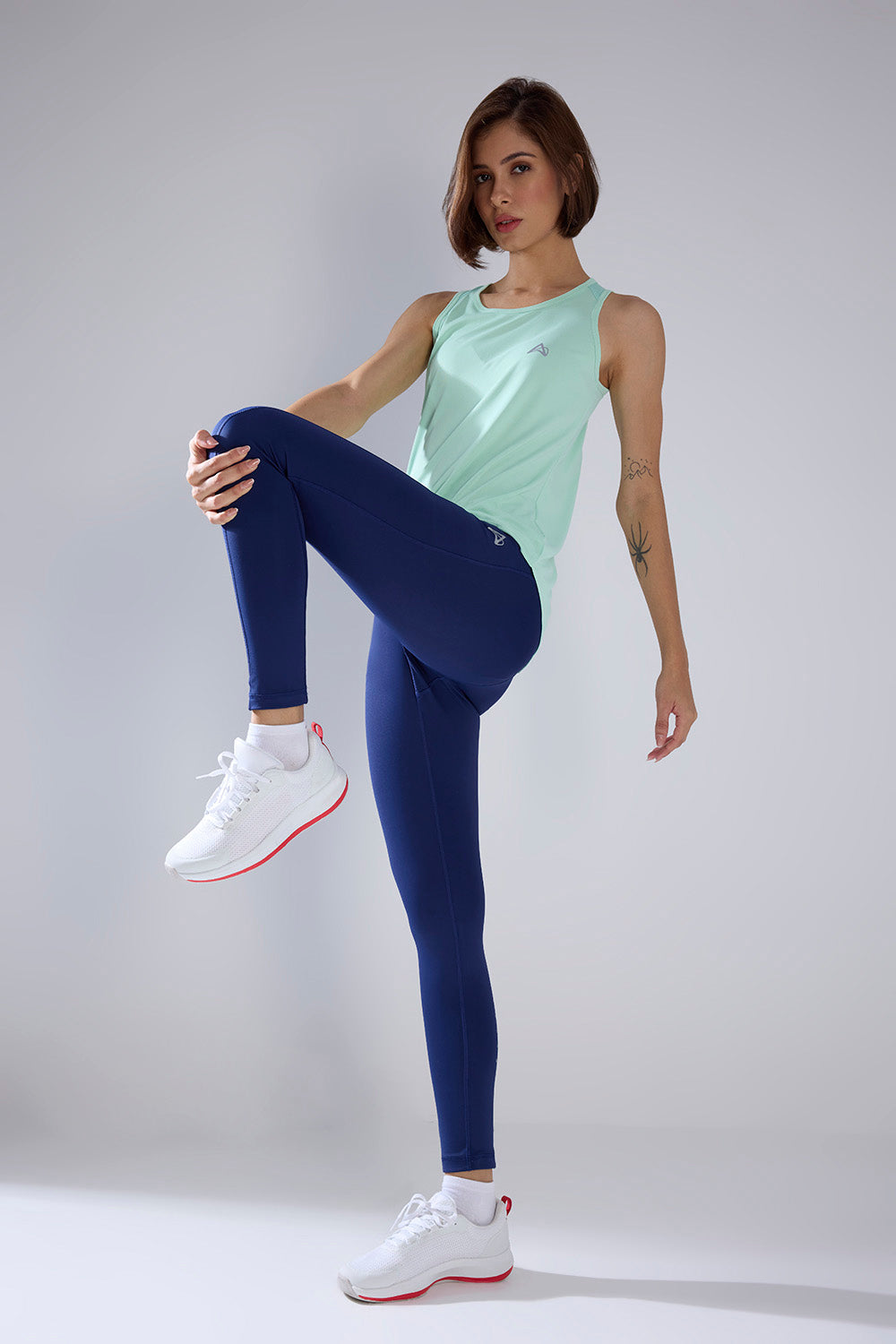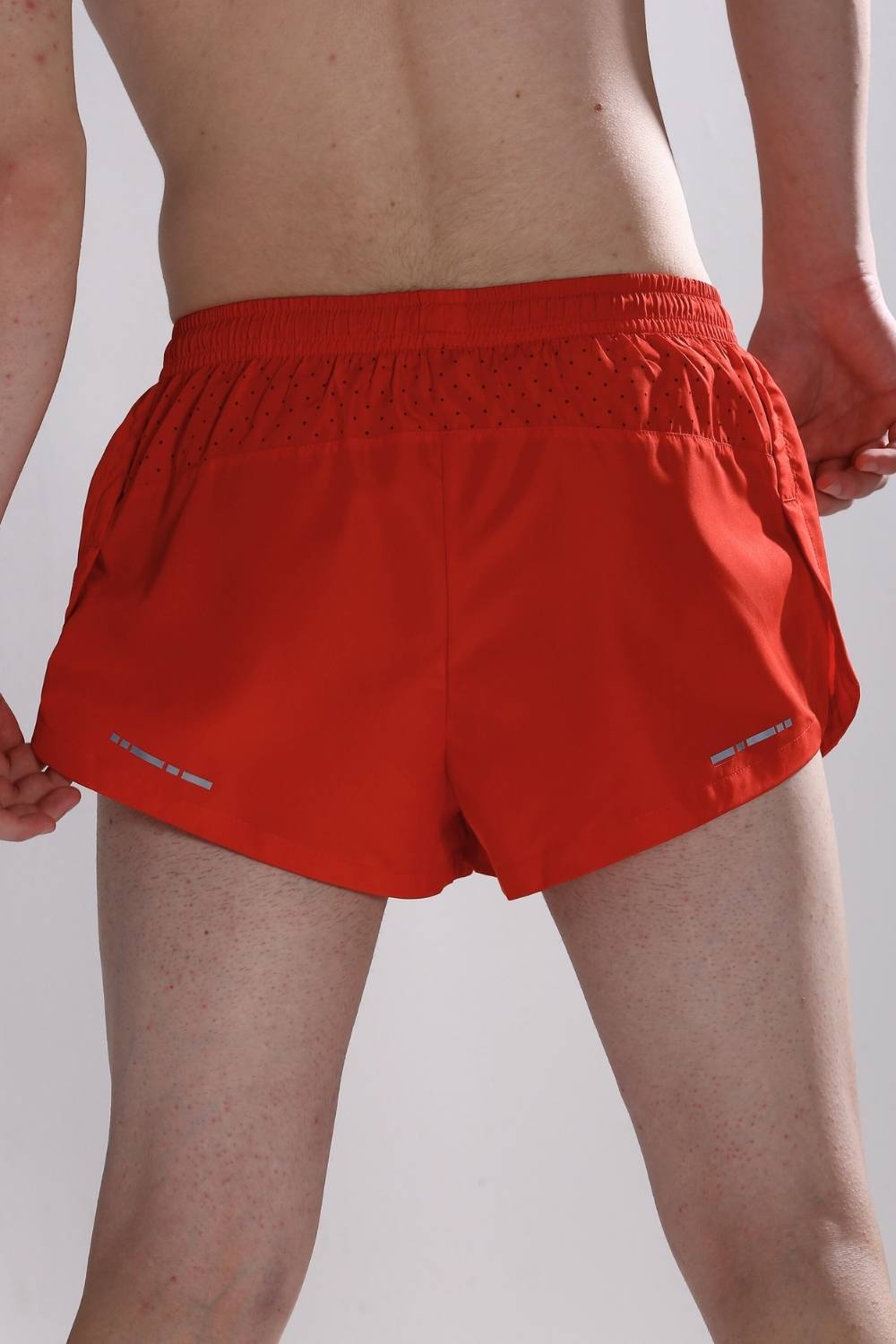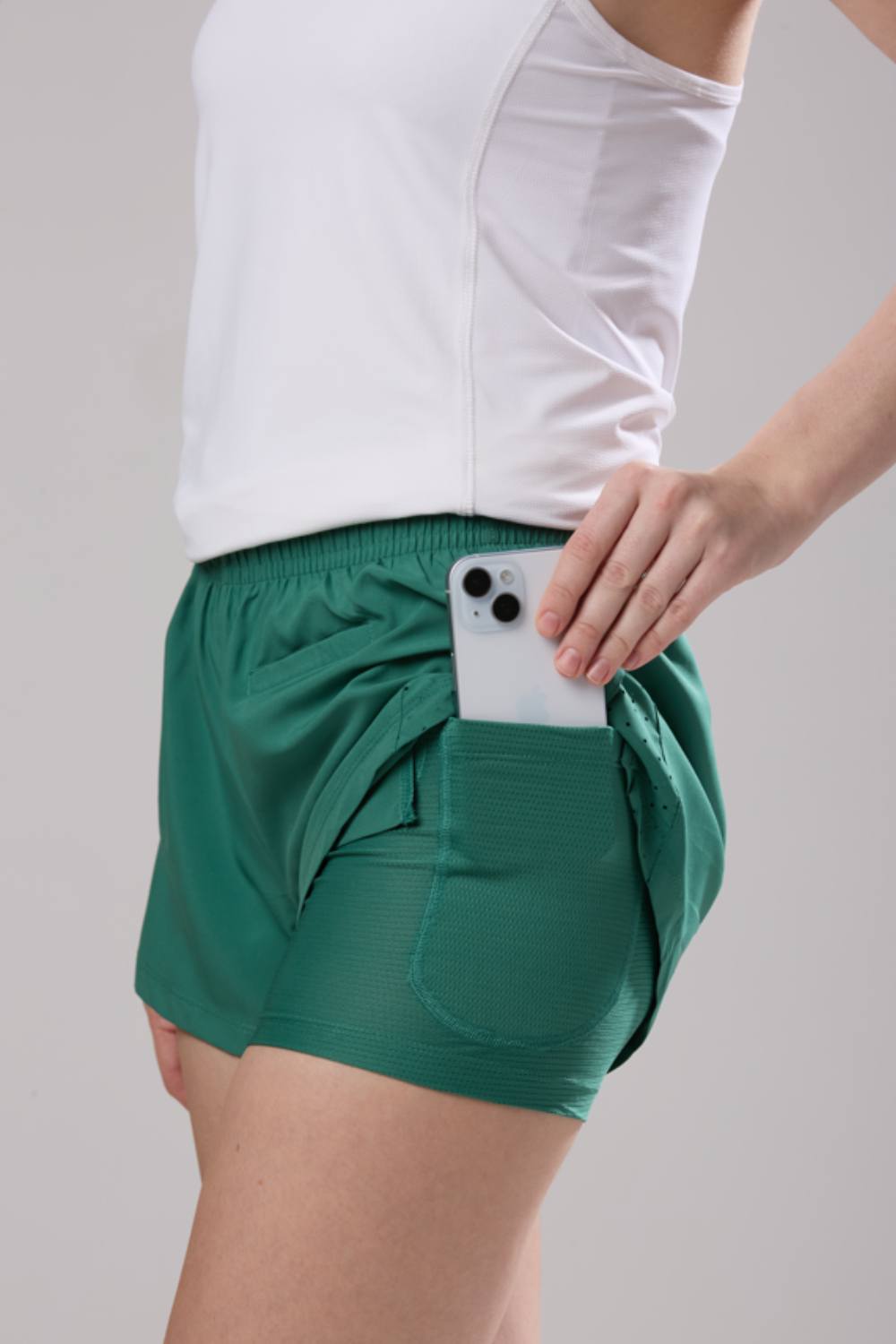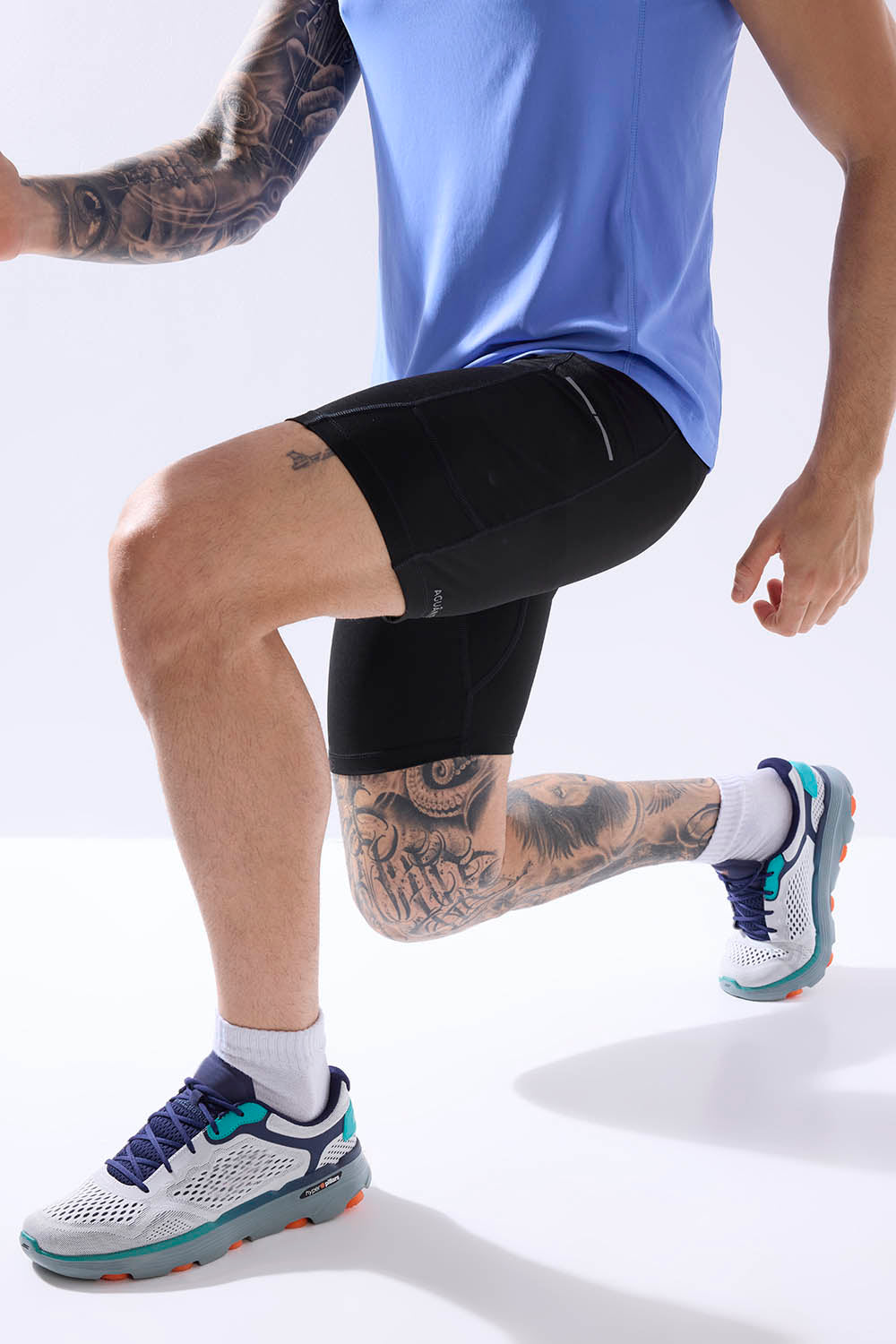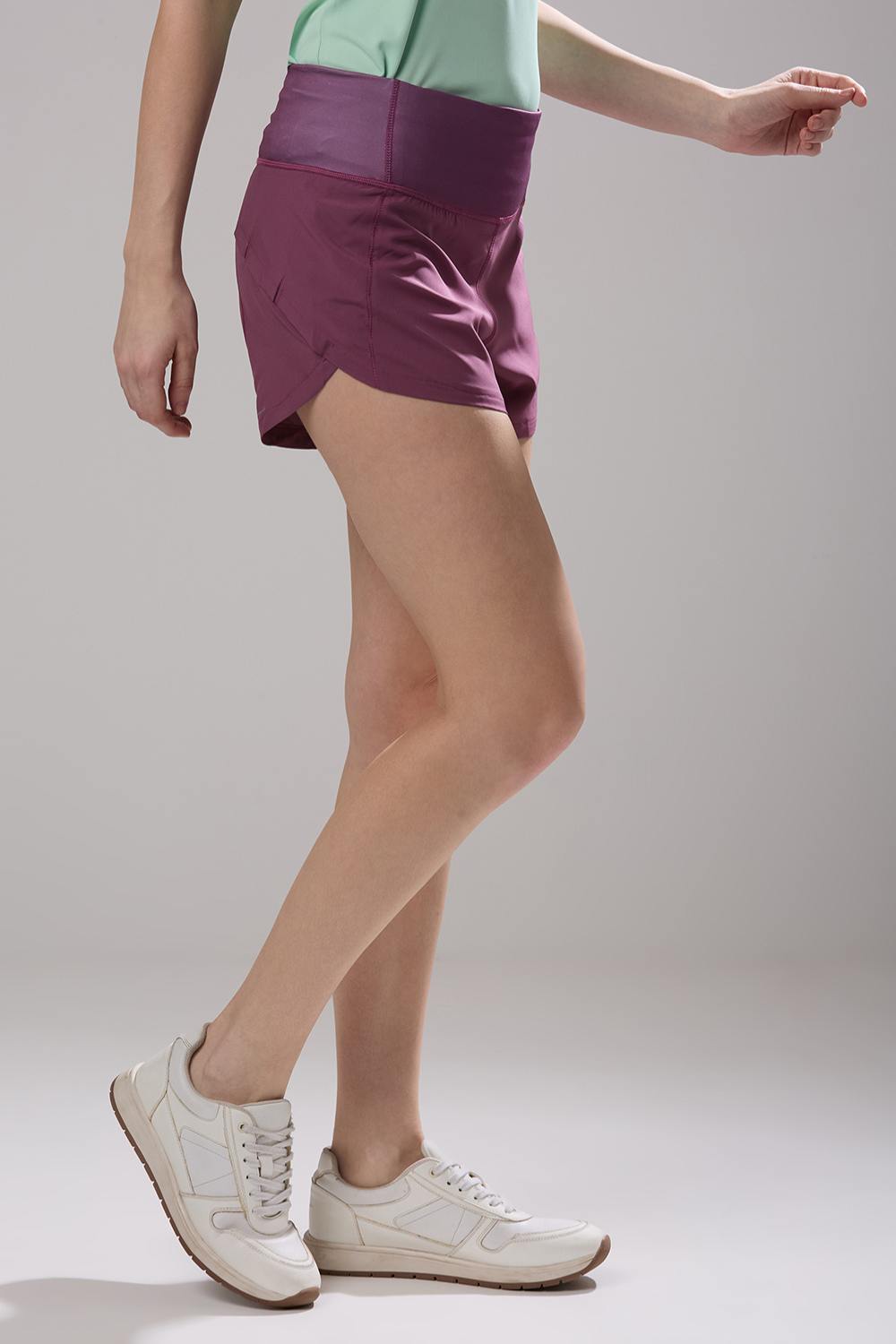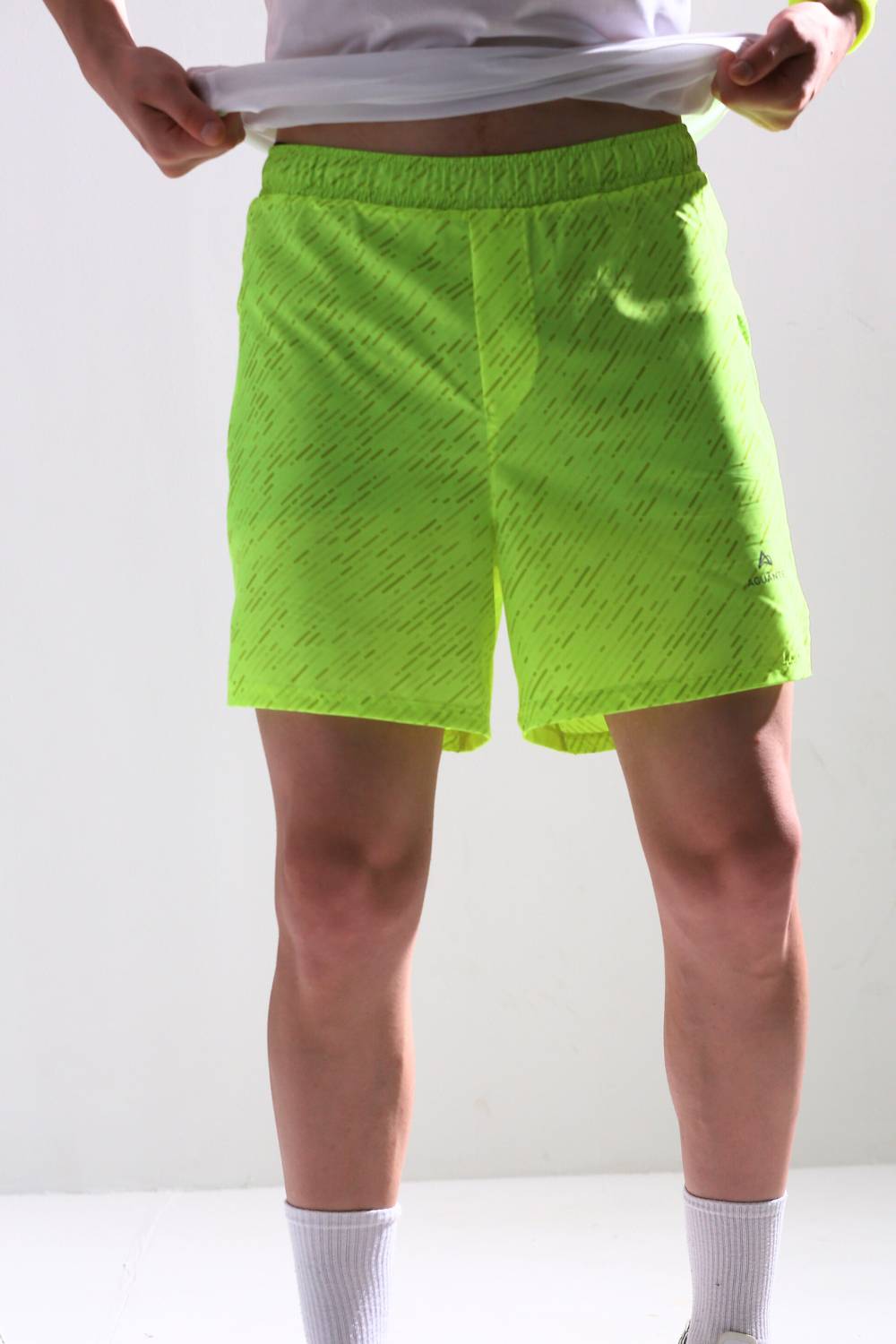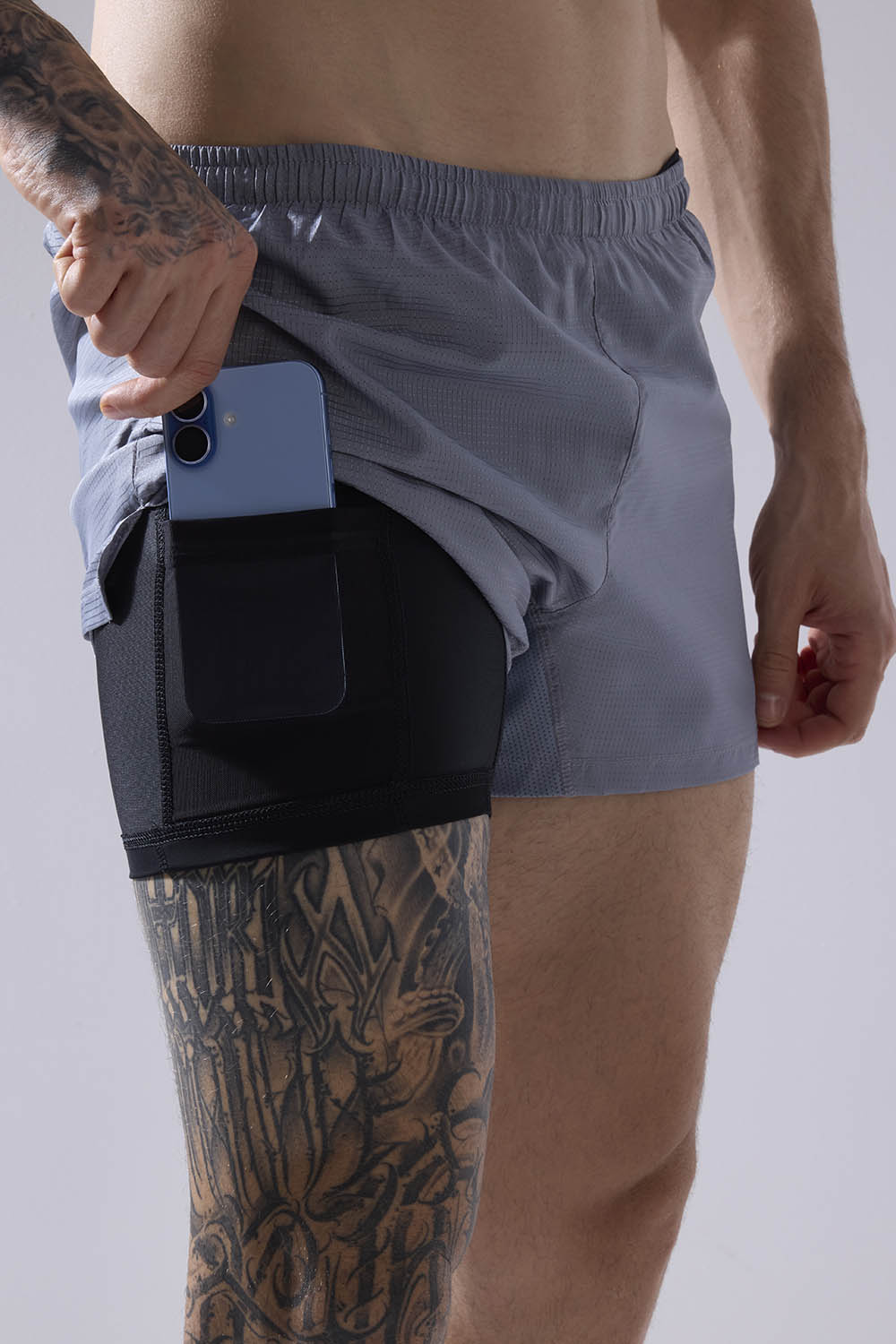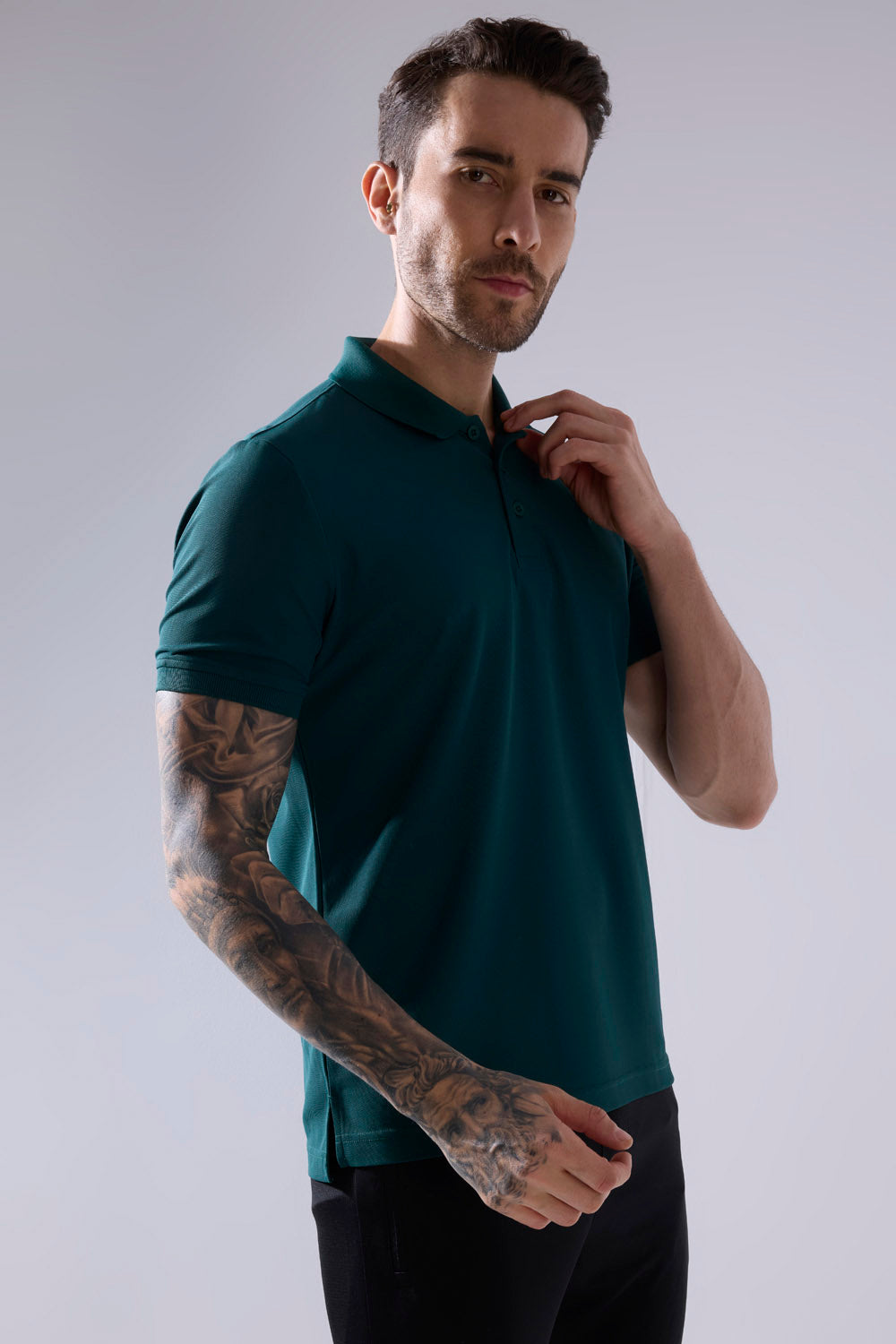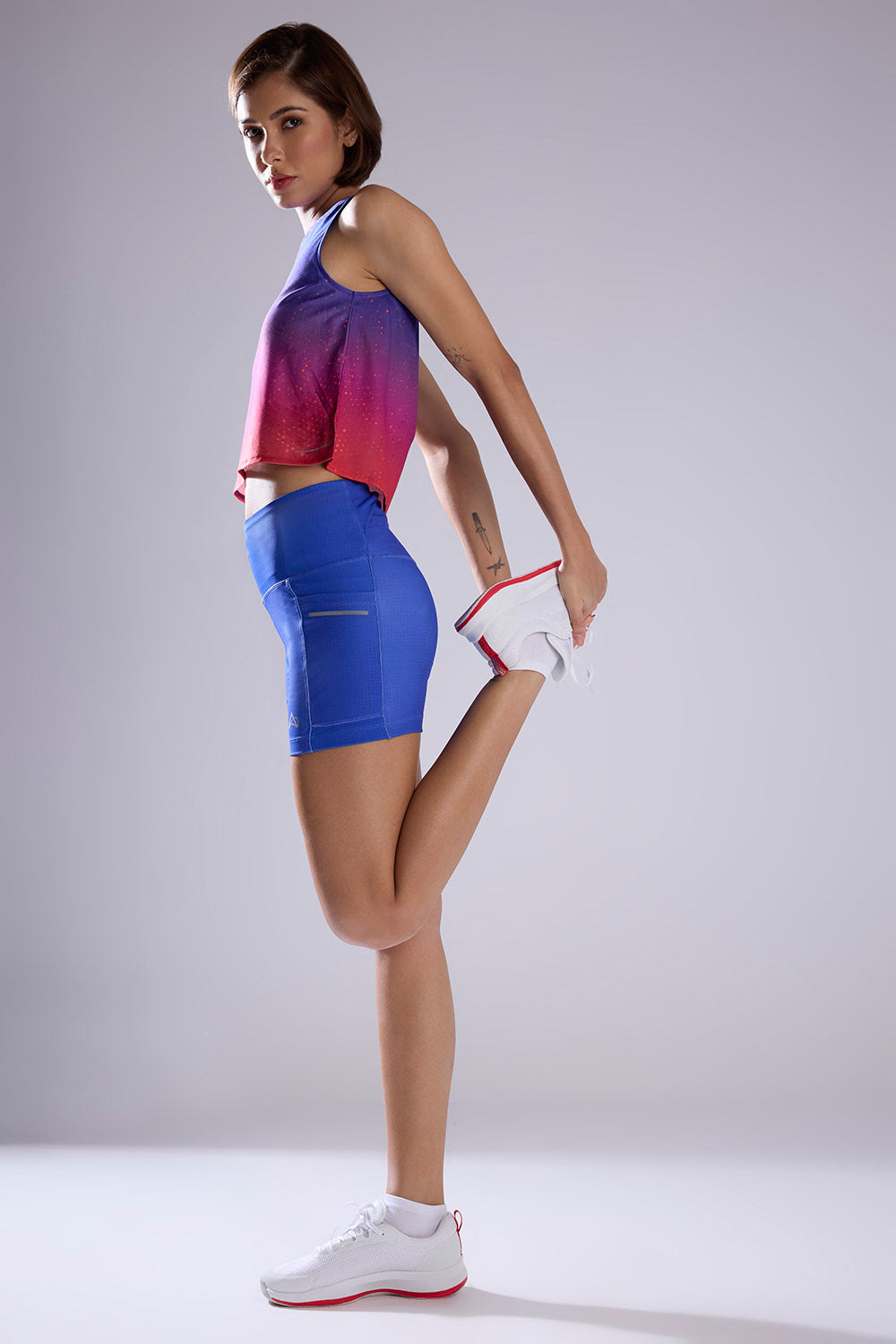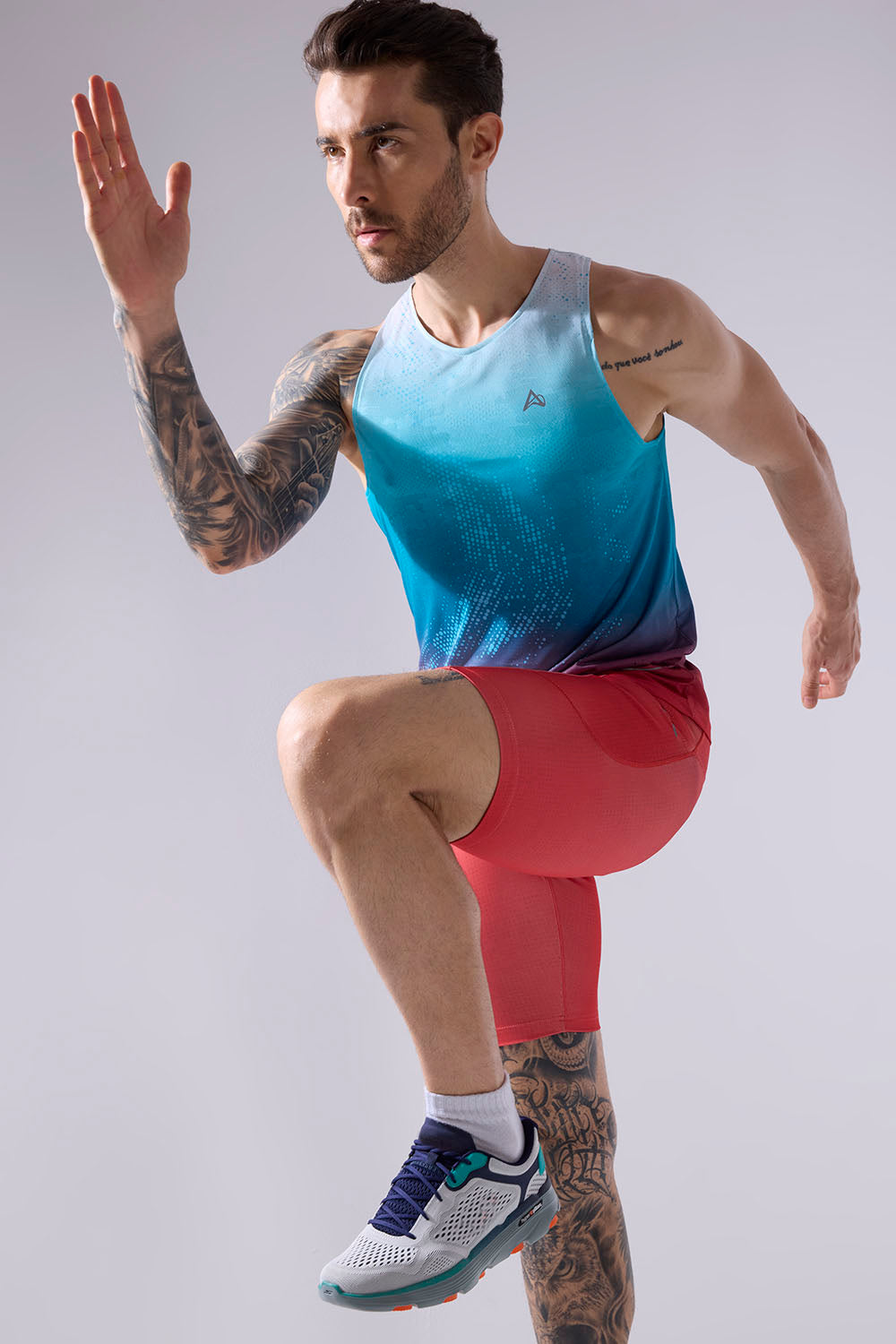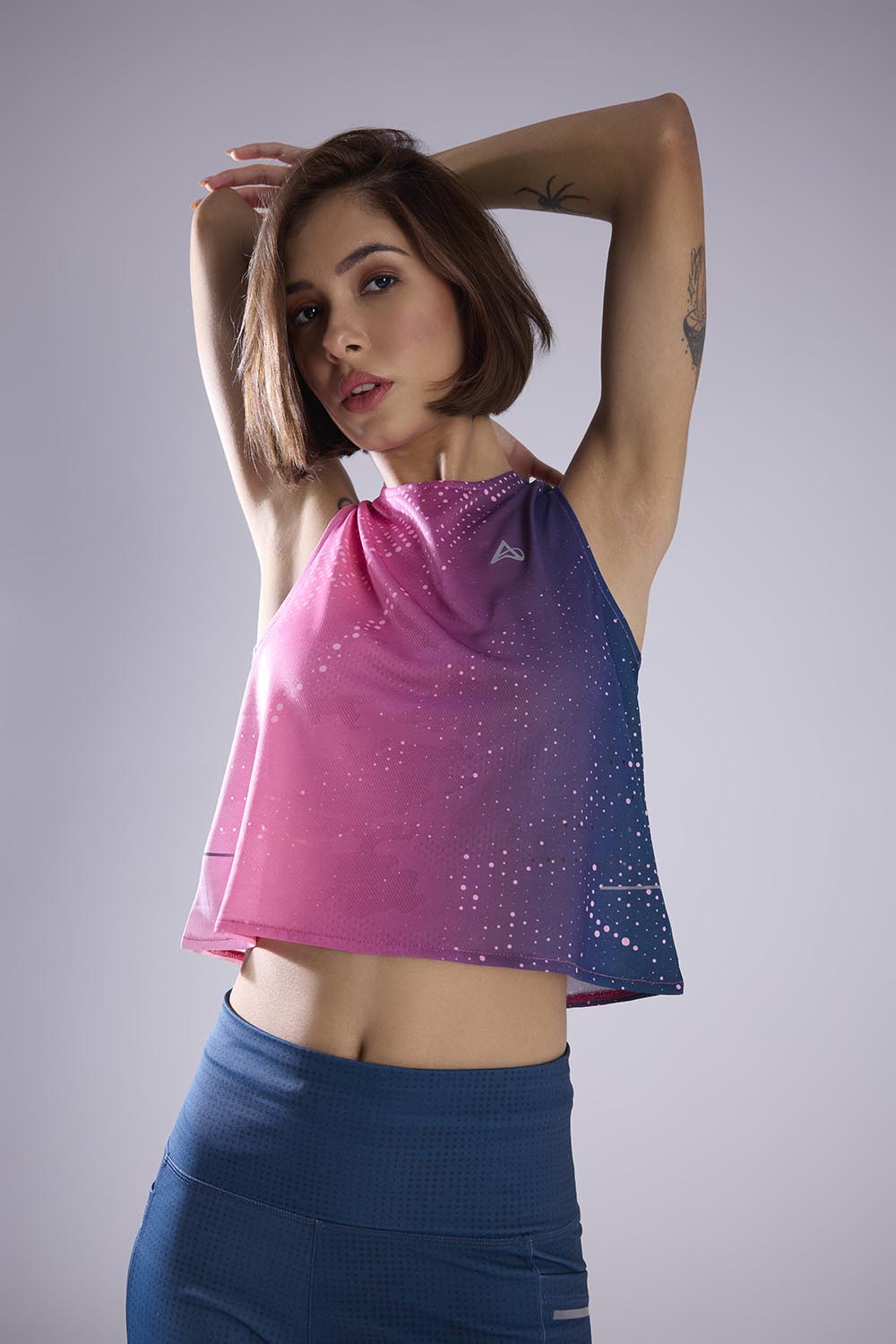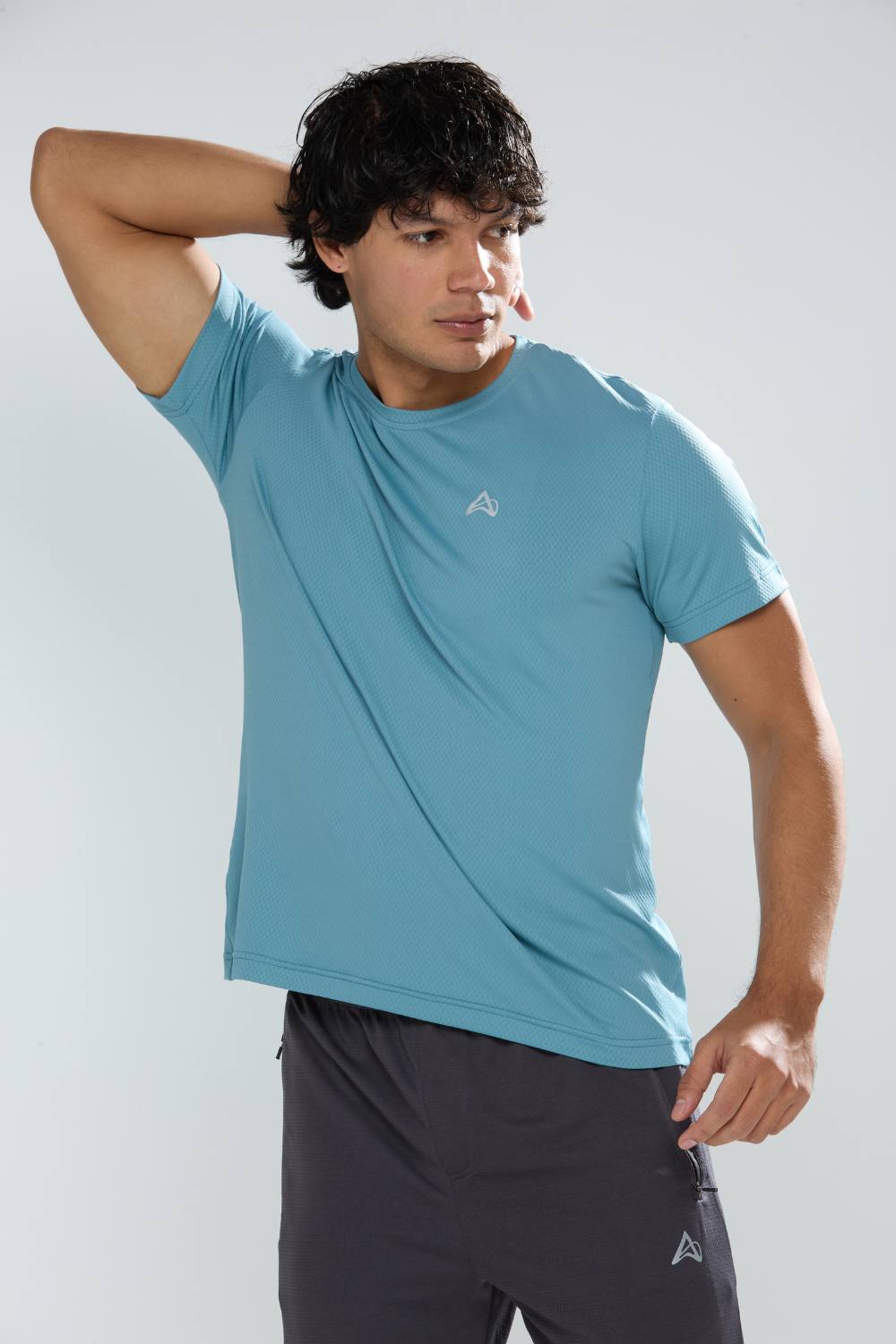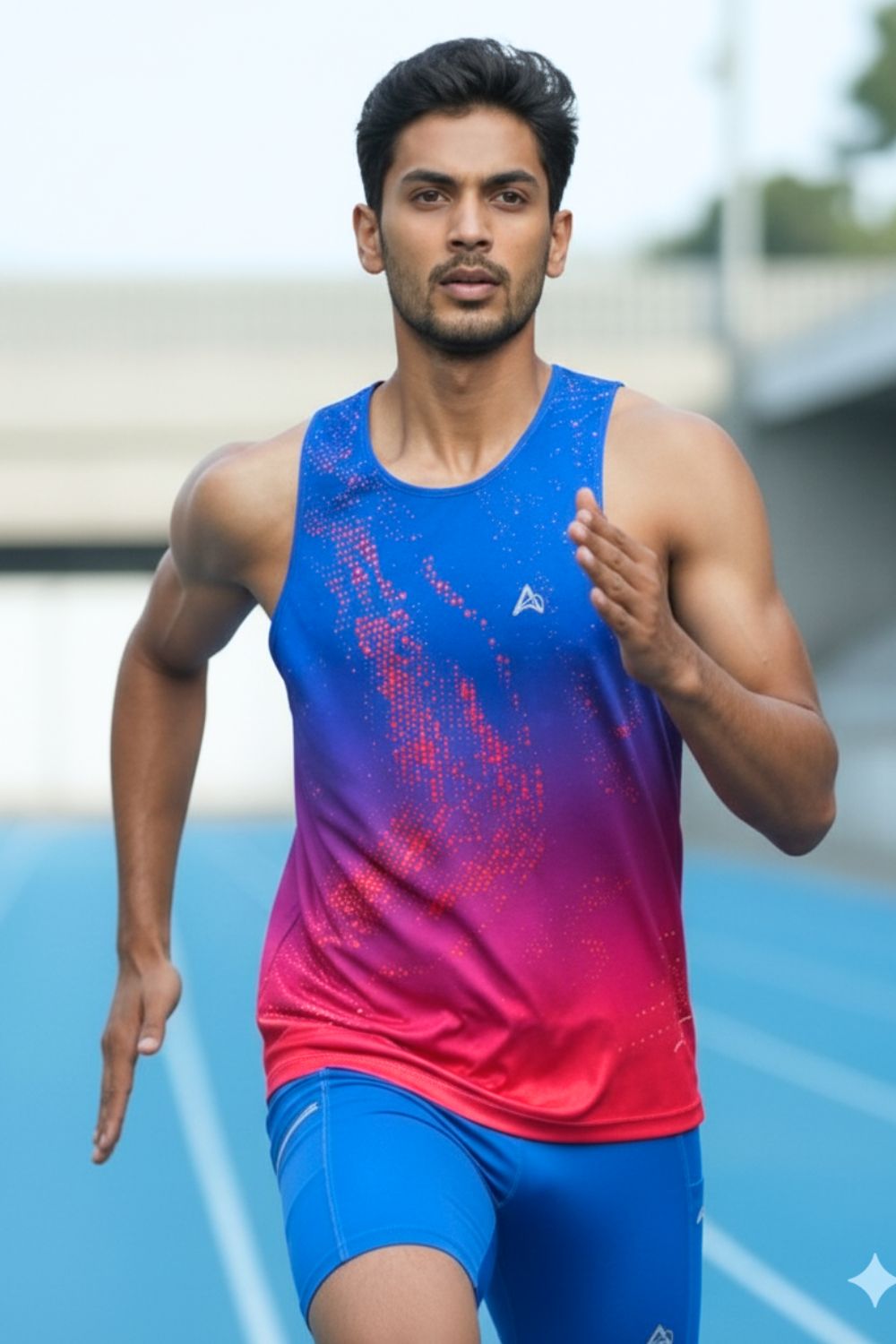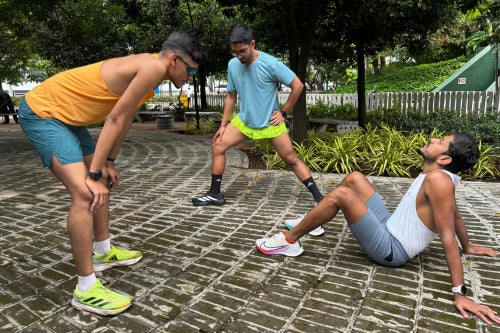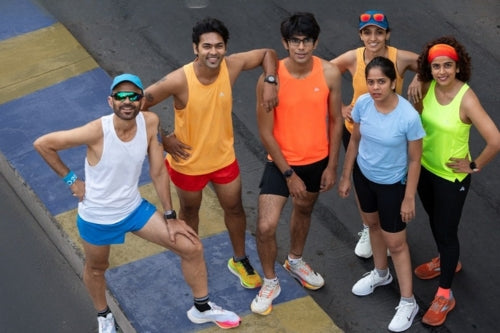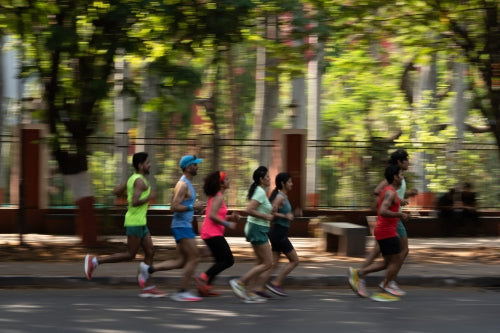Quick Listen:
Imagine slipping into a pair of running shoes that feel like they were molded specifically for your feet, where each stride propels you forward with minimal effort and zero distractions. No blisters forming mid-run, no unnecessary weight dragging you down just you, the pavement, and a sense of unbreakable flow. This isn't some futuristic fantasy; it's the reality of ergonomic fit in modern running gear, a design philosophy that's reshaping athletic performance one step at a time. As runners push their limits, from casual joggers to elite marathoners, the science behind what we wear on our feet and bodies is proving crucial in enhancing efficiency, preventing injuries, and unlocking new personal bests.
Tired of gear that slows you down? Chafing, soggy fabrics, and missing pockets kill your run's momentum. At Aguante, we're runners who get it. Our high-performance activewear features moisture-wicking fabrics, ergonomic designs, and smart storage to keep you focused. Shop Now!
Understanding the Role of Ergonomic Fit in Running Performance
At its core, ergonomic fit in running apparel and footwear means creating products that harmonize with the body's natural biomechanics, reducing friction and optimizing movement. This approach goes beyond mere sizing; it involves precise engineering to support muscles, align joints, and adapt to the dynamic stresses of running. For athletes, the benefits are profound: greater comfort during long sessions, improved energy conservation, and a lower risk of overuse injuries like shin splints or knee strain. By minimizing resistance whether from ill-placed seams or excessive material ergonomic designs allow runners to maintain form longer, translating to better times and fewer setbacks.
In this deep dive into ergonomic fit enhances running performance, we explore the science and real-world implications. Brands like Aguante are pioneering this space, developing activewear that integrates cutting-edge materials and body-mapping techniques to deliver tailored support for runners. Drawing on physiological research, these innovations blend data-driven insights with practical application, helping everyday athletes achieve more sustainable and enjoyable runs.
Research underscores the importance of such designs. Studies highlight how features like cushioning and weight distribution directly influence performance metrics, emphasizing that the right fit isn't just about feel it's about measurable gains in efficiency and safety.
Emerging Trends in Ergonomic Activewear for Runners
The running gear landscape is advancing rapidly, with ergonomic principles at the forefront of innovation. Footwear, a cornerstone of any runner's kit, exemplifies this shift. A comprehensive systematic review of controlled trials has delved into how various shoe attributes impact running economy, defined as the energy efficiency of locomotion. Analyzing 26 studies involving 483 healthy adult long-distance runners, the review revealed that barefoot and minimalist styles significantly boosted economy compared to traditional shod running, with standardized mean differences of -0.28 and -0.62, respectively. Notably, enhancements in longitudinal bending stiffness yielded an SMD of -0.53, while improved cushioning delivered -0.48, both with strong statistical significance. These findings, based on data up to April 2024, suggest that strategic design tweaks can help runners conserve energy, potentially extending endurance without added training.
Yet, the review also cautions about risks, such as higher injury rates with minimalist approaches, including increased ankle pressure and calf pain. This balance between efficiency and safety is driving designers toward hybrid solutions that incorporate advanced foams and plates for optimal energy return.
Apparel trends are equally compelling. Fabrics engineered for moisture management and strategic compression are now standard, aiding circulation and reducing muscle fatigue. The advent of 3D body scanning allows for garments that conform precisely to individual anatomies, eliminating common irritants like chafing. Physiological studies further support these developments; one analysis from 2005 examined how shoe design affects traction and locomotion economy, finding that even a 1% improvement in efficiency measurable through oxygen uptake can stem from better cushioning and reduced foot weight. Adding just 100 grams per shoe hikes oxygen consumption by about 1%, underscoring the need for lightweight yet supportive builds.
Consumer demand is propelling these trends forward, fueled by heightened awareness of fitness benefits. The global athletic footwear market, closely tied to running innovations, stands at USD 144.07 billion in 2025 and is forecasted to reach USD 204.56 billion by 2034, growing at a CAGR of 3.97%. Asia Pacific leads with a 36% share from 2024, expected to expand at 4.12% CAGR, driven by rising sports participation and e-commerce. Similarly, the dedicated running shoes market is valued at USD 48,419.3 million in 2025, projected to hit USD 75,916.4 million by 2035 at a 4.6% CAGR. Road running shoes dominate at 48.6%, while the men's segment holds 53.2%, though women's lines are surging thanks to targeted branding.
Experts warn, however, that no universal solution exists. As a biomechanist from the University of Memphis explains in a guide to choosing running shoes, claims of injury-proof features often lack solid backing. Instead, prioritize elements like drop height and carbon-fiber plates based on personal gait and comfort, as these can subtly enhance performance without overpromising.
Real-World Applications: Case Studies and Success Stories
Aguante exemplifies how ergonomic fit translates to on-the-ground success. Their runner-focused apparel employs body-contoured designs that enhance mobility and recovery, with users noting reduced fatigue and sharper focus during extended sessions. Athletes using Aguante gear report consistent stride improvements, attributing gains to the brand's emphasis on natural alignment and supportive fabrics proving that thoughtful ergonomics can turn challenging distances into achievable goals.
Industry leaders like Nike are pushing boundaries too. From their Beaverton headquarters, designers have revolutionized running with "supershoes" like the Alphafly 3, featuring lightweight ZoomX foam and triple air units for superior responsiveness. Collaborations with stars such as Eliud Kipchoge and the late Kelvin Kiptum highlight this impact; Kiptum's 2023 Chicago marathon record of 2:00:35 showcased how these innovations could shave minutes off times. As detailed in a report from Nike supershoe HQ, the integration of carbon plates and reduced mass has yielded up to 4% efficiency gains, backed by extensive biomechanical testing in their state-of-the-art lab.
Comparisons with peers like Under Armour reveal a shared commitment to ergonomics, from cushioned midsoles that absorb impact to uppers that prevent blisters. These advancements not only elevate elite performance but also make running more accessible, fostering a culture where technology meets human potential.
Key Challenges and Limitations of Ergonomic Fit in Running Apparel
While promising, ergonomic fit faces significant obstacles. Achieving universal sizing is complex, as body diversity demands flexibility that standard models often can't provide. Custom options, while ideal, introduce higher costs and production delays, challenging brands to scale without compromising quality.
Economics play a role too. Premium materials inflate prices, deterring budget-conscious runners despite proven benefits. In the running shoes arena, counterfeit influxes and steep development expenses exacerbate this, forcing companies to navigate fierce competition while validating claims through rigorous testing.
Geographic disparities add another layer; emerging markets lag in access, even as Asia Pacific thrives. This uneven distribution highlights the need for broader supply chains to democratize ergonomic advantages.
Opportunities and Business Impact of Ergonomic Activewear
The potential for growth is vast in this expanding sector. With fitness trends booming, niches for specialized running gear offer lucrative avenues. The running shoes market's 4.6% CAGR trajectory to USD 75,916.4 million by 2035 positions ergonomics as a prime differentiator, particularly in women's and sustainable segments.
For Aguante, this translates to stronger customer allegiance through performance-proven products. By merging ergonomic precision with eco-friendly materials like recyclable foams that cut environmental footprints brands can appeal to conscious consumers, boosting reputation and market share.
Ultimately, strategic investments in these designs yield dividends, distinguishing innovators in a crowded field and driving long-term profitability.
The Future of Ergonomic Fit in Running Performance Apparel
Authorities in the field affirm ergonomic's central role. Reflections from Nike designers on athlete reactions to prototypes reveal the exhilaration of breakthroughs, like foams that return energy and mitigate fatigue. Ahead, integrations of smart sensors and AI could personalize fits in real-time, anticipating needs before they arise.
Runners stand to gain immensely by embracing ergonomic activewear, fostering resilient, high-performing routines. Aguante and similar brands are well-positioned to lead, continually refining offerings to align with scientific progress and user feedback. In essence, ergonomic fit bridges ambition and achievement, proving that when gear syncs seamlessly with the body, every run becomes a step toward excellence. As the industry evolves, one truth endures: mastering the perfect fit will define the next era of running.
Frequently Asked Questions
How does ergonomic fit enhance running performance?
Ergonomic fit aligns running gear with the body's natural biomechanics, improving energy efficiency and reducing injury risk. By supporting joints, reducing material friction, and optimizing muscle movement, runners can maintain better form, experience less fatigue, and achieve faster times with more comfort.
Are there any downsides to using ergonomic running gear?
While beneficial, ergonomic gear can be costly and challenging to size universally due to individual biomechanics. Minimalist designs, although efficient, may increase injury risk without proper adaptation. Access in emerging markets also remains limited, highlighting a need for broader affordability and availability.
What are the latest trends in ergonomic running shoes and apparel?
Modern trends include minimalist shoes that boost running economy, hybrid designs with advanced cushioning and carbon plates, and apparel with moisture-wicking, compressive fabrics tailored through 3D body scanning. These innovations improve comfort, circulation, and endurance, making them popular among both casual and elite runners.
Disclaimer: The above helpful resources content contains personal opinions and experiences. The information provided is for general knowledge and does not constitute professional advice.
You may also be interested in: Aguante - Activewear Clothing
Tired of gear that slows you down? Chafing, soggy fabrics, and missing pockets kill your run's momentum. At Aguante, we're runners who get it. Our high-performance activewear features moisture-wicking fabrics, ergonomic designs, and smart storage to keep you focused. Shop Now!
Powered by flareAI.co

